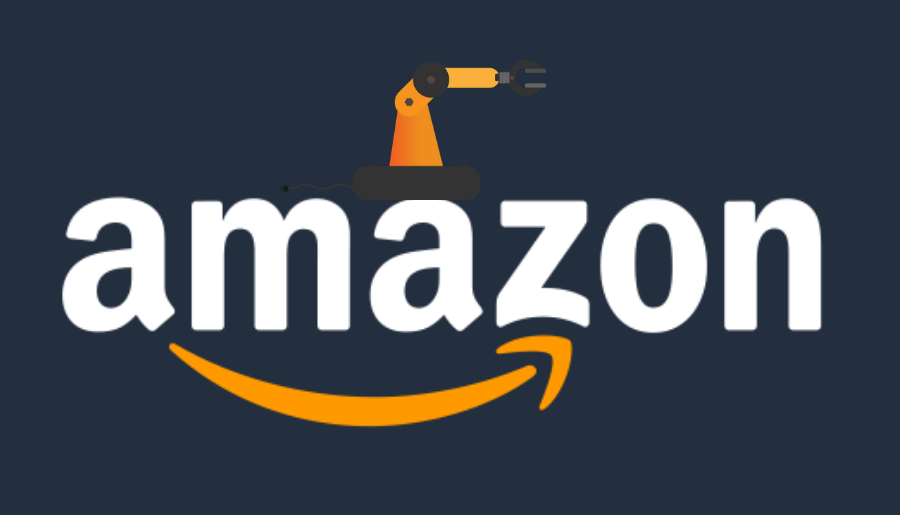Time.
It’s the most valuable resource.
A lot of us Amazon sellers came to the platform to give ourselves more of this resource.
We thought by outsourcing our fulfillment, we’d probably have more of it.
Well, we all know that’s not true. Just because fulfillment is done for us doesn’t mean we don’t have to spend more time on other tasks, such as prep, customer service, purchasing items, creating business relationships, and much more.
So, that leads us to the question: How can we get the most time out of our Amazon FBA business, while still growing at a rapid pace?
It all comes down to automation.
And no, I don’t mean industrial automation like these automated poly bagging machines. Though, if you can afford them, they’re pretty darn cool.
I mean software automation.
Today, we’re going to dive into 5 ways you can automate your FBA business through the power of software.
So, let’s jump right in!
Leveraging the Power of Amazon Software to Automate Your FBA Business
1. Automate Your Purchase Orders
Purchase order creation is one of the biggest time wasters for FBA sellers. Manually updating SKUs, checking sales ranks, price volatility, looking at graphs … it all takes a ton of time.
Luckily, there’s catalog updater tools to assist with this.
Sellonaut, for example, allows you to upload your catalog and will update it continuously. Then, you can set filter criteria and automatic exports.
As you grow, you may want to leverage more historical data and advanced filter criteria to gain a competitive advantage. After all, more data points equals more factors in your decision-making, and thus more profit!
And Sellonaut handles all of this for you.
With a few clicks, you can have the bulk of your purchase order work automated. Everything’s updated continuously, 24/7, and you can have your purchase orders sent daily to your email inbox.
All that’s left after that is calling up your vendors and sending in some POs!
2. Automate Your PPC
There’s several tools available that have popped up that allow sellers to automate their PPC. There’s lots of choices available with a variety of price ranges and feature sets.
Some of these tools charge by number of campaigns, others a percentage of PPC spend, and others a flat fee.
Definitely shop around when choosing these tools – one algorithm may favor your category more than the next.
These tools link directly to the Amazon Advertising API, and as such can offer very low latency and fast bid updates.
Managing sponsored ads’ keywords and bid adjustments is fully automated and taken care of with these platforms, saving you the countless hours of manual PPC management and bid updates.
3. Automate Your Prep
While Amazon does a great job of handling fulfillment, you still need to prep your goods for the fulfillment centers.
Luckily, there’s a ton of companies that have popped up to do this exact job. You can have your goods shipped to the prep center, rather than your own house or warehouse, and let them do the rest.
These companies are called 3PLs, or third-party logistics providers. They make it their job to handle shipment prep, and are especially good to implement with those that have multichannel inventory, or perhaps other eCommerce stores. By using 3PLs, you’re able to leverage their volume and scale to leave the shipment and prep to them.
You may even save a bit on outbound shipping!
They’ll ask you for FBA labels, you can provide them, and they’ll handle everything – from stickering, to polybagging, to even bundling and individual unit boxing.
Choosing the right 3PL is crucial for your business. Be sure to shop around – services and costs vary wildly based on 3PL features and location.
4. Automate Your Pricing Strategy
Repricing is a huge deal among both private label and wholesale sellers – and for a good reason. Manually updating prices takes forever!
Setting yourself up with the proper repricer, and taking a few hours to configure your ideal settings, ensures that you’ll never have to manually price SKUs again.
We recommend spending a few hours to tweak your settings, rather than using the default repricing algorithms out of the box. Some are great, but we’ve found that to get a decent competitive advantage, you want to handle quite a bit of “what-if” case scenarios. Lowering the price by $0.01 indefinitely surely works to raise your sales … but at what cost in terms of profit?
You will need to spend some time deciding how competitive you’d like to be with your pricing to keep the perfect mix of profitability and sell-thru rates.
Once your repricer is setup properly, you’ll never have to worry about buy box coverage again. As long as you’re configured to be competitive and get the velocity of sales you’d like in your desired timeframe, you’re good to go.
5. Automate Your Outreach
This step is often geared toward private label sellers, but still is crucial to wholesale sellers as well.
Automating your email follow up is crucial for any seller looking to boost their review count, or grab some extra seller ratings.
If you’re in private label, especially, configuring an automated feedback software can provide a great deal of reviews over time. And we all know, of course, that higher review-count items result in more sales, so this tactic has a direct impact on your bottom line.
We recommend, of course, to review the Amazon Terms of Service regarding email follow up and incentivized reviews beforehand.
But once you have one of these setup properly, within Terms of Service, you’ll receive a solid boost to your feedback percentage, likely along with a resulting boost to your sales.
By implementing these 5 tactics, you will be giving yourself a huge boost to your available time, leaving you with more time for what’s important – vendor onboarding. Then, let your purchases be sent to your inbox daily, and schedule those inbound shipments!

